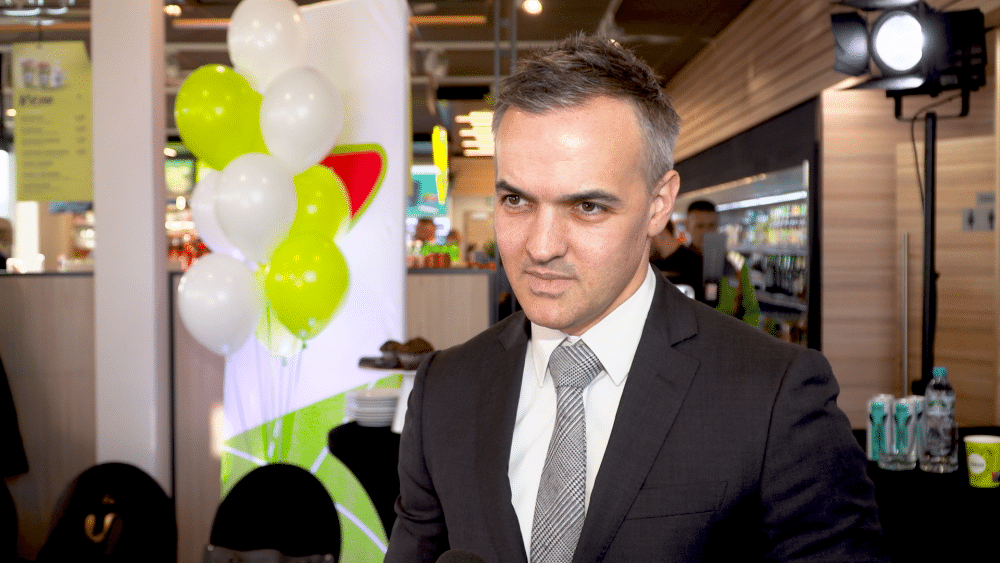The global fuel market has been under immense pressure in the past three years due to unpredictable factors such as the pandemic and the war in Ukraine, with the latter’s destabilizing effects on prices and supply chains still being felt. The EU’s climate policy, aimed at green transformation and moving away from fossil fuels, is causing fuel companies to look for alternative business branches. “In the next 25 years, you will still be able to find gasoline and diesel at fuel stations, although there will also be chargers for electric vehicles and options for hydrogen-powered vehicles. However, fuel companies’ departure from fossil fuels will begin in the longer term, perhaps after 2050,” assesses Péter Ratatics, Deputy CEO of MOL Group.
“In the fuel market, we have observed many fluctuations over the past few years. As a result of the COVID-19 pandemic, consumption has significantly decreased, while significant energy price increases occurred following the Russian invasion of Ukraine, which met with various reactions from consumers. When sanctions were imposed on Russia, all logistics routes had to be rebuilt. At present, in the fuel industry, on the retail sales side, all entities are trying to find new ways to deliver their goods,” says Péter Ratatics.
The global fuel market has experienced significant turbulence due to the pandemic and the war in Ukraine. First, in 2020, pandemic mobility restrictions resulted in a significant drop in consumption, reflected in oil prices as there was an oversupply in the market. This also slowed down infrastructural investments, such as in refining capacity. According to a report by POPiHN and Polityka Insight, refineries processing 2.2 million barrels of oil a day were shut down worldwide in 2020.
Soon after, in February 2022, Russia started a full-scale war in Ukraine, creating a massive surge in demand for fuels. The war also struck supply chains, as sanctions were imposed on Russian oil and energy resources. Fuel companies had to ensure not only the supply of oil and fuels but also that these came from directions other than Russia. Sanctions and reluctance to finance the Russian Federation’s war machine led to the rapid derusification of Europe’s fuel market over the past two years.
“The current situation has significantly improved, and I do not foresee any significant logistical problems in the near future. The security of supplies is now greater,” reassures the MOL Group Deputy CEO.
According to him, a significant factor affecting the fuel market is the EU’s climate policy, which promotes green transformation and a move away from fossil fuels. This has caused fuel companies to start looking for alternative business branches.
“Probably by 2050, a significant part of these fuels will disappear from the market, which means that all fuel companies should look for alternatives. Some of them are already investing in renewable energy, photovoltaic panels, and wind energy, as they want to become energy companies. Others still believe that the petrochemical industry will remain. Petrochemicals that can substitute fossil fuels are still irreplaceable. For example, insulation materials, synthetic cushion fillings, and everyday plastic items, such as for the furniture industry, must be made from fossil fuels. Recycling, however, significantly reduces dependence on fossil fuels,” says the expert.
Alternative solutions appear in the retail segment of the fuel industry in the form of electromobility and hydrogen. These technologies and the infrastructure to power vehicles this way need time to develop though. “I believe that at fuel stations in the next 25 years, you will still find gasoline and diesel, though there will also be chargers for electric vehicles and options for powering hydrogen vehicles. However, the departure of fuel companies from fossil fuels will begin in a longer time frame,” estimates Péter Ratatics.
According to the Electromobility Meter launched by PZPM and the Polish Association of Alternative Fuels, the electrification of transport in the Polish market is progressively accelerating. By the end of December 2023, nearly 58,000 fully electric cars were driving on Polish roads. Their number increased by 23,650 in the previous 12 months, a 52% year-on-year growth. Meanwhile, charging infrastructure is also developing – by the end of last December, there were 5,930 publicly accessible electric vehicle charging points (3,300 stations) in Poland, with a quarter of these being quick DC charging points.
“As for the charging network, and therefore alternative solutions, we can say that we are at the experimental phase. During this phase, we have learned a lot about development, implementation, and service, what kind of offer we need to prepare for customers, what payment methods should be available and so on. All these experiences will be useful. We will continue to develop our network. Until then, we will selectively increase the availability of chargers at certain stations, but our short-term strategy does not currently involve equipping all stations,” says the group representative.
MOL Group has over 250 stations with the capability to charge electric cars, which equates to about 10% of its network. The same percentage will also be found on the company’s Polish stations. “Their geographical distribution should be uniform, allowing customers to drive across the country from Gdańsk to Warsaw or Krakow. We would like to provide that possibility in terms of country coverage. To densify this network, we need more customers who would like to use this service and who are currently missing,” emphasizes Péter Ratatics.
According to the POPiHN report for 2022, the record increase in global demand for oil, the war in Ukraine, and the changing direction of raw material imports due to sanctions imposed on Russia had a significant impact on the prices of finished fuels. Despite this, fuel consumption increased by 5% year on year in Poland. Data for the first three quarters of 2023 show that fuel consumption increased by 6% to 28.3 million cubic meters.
